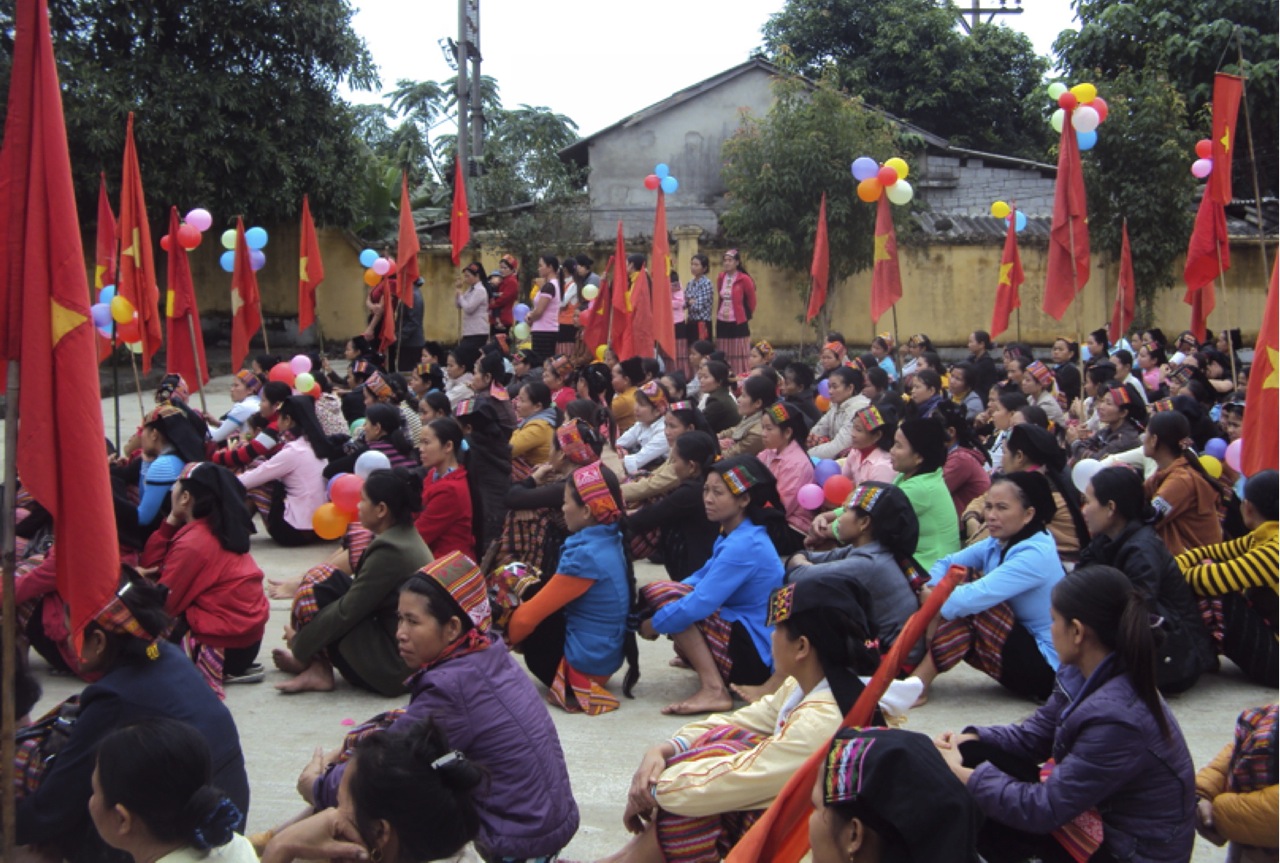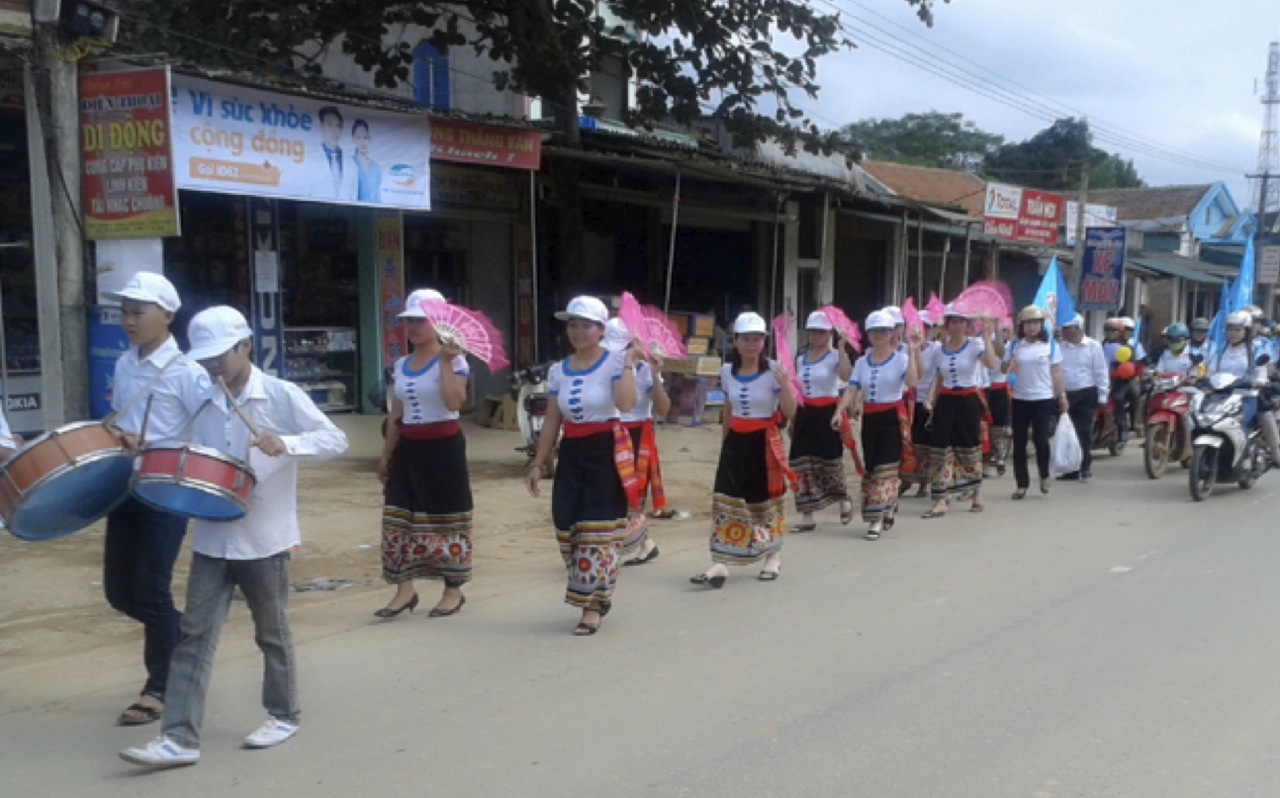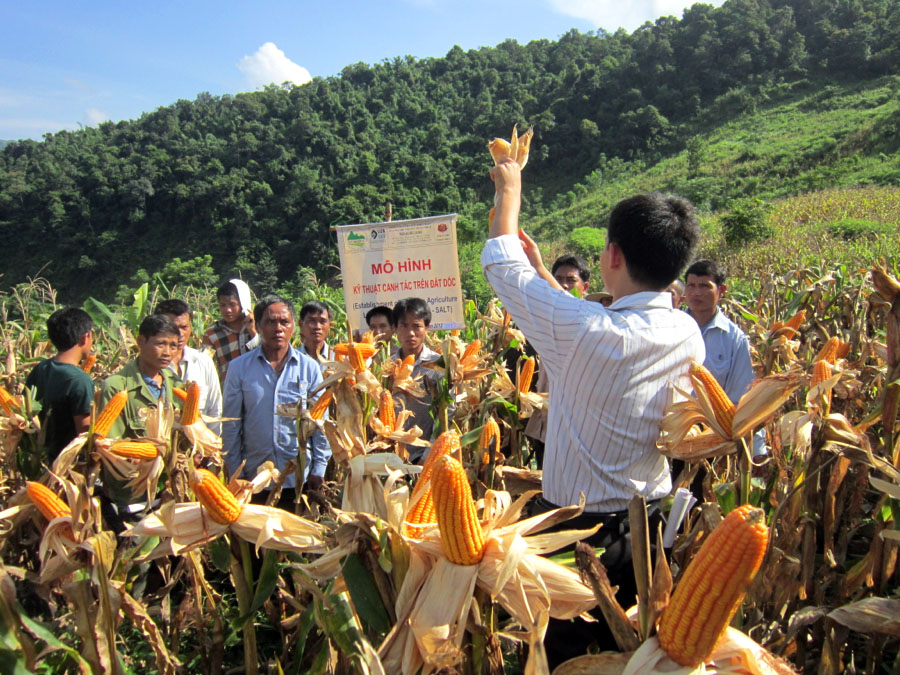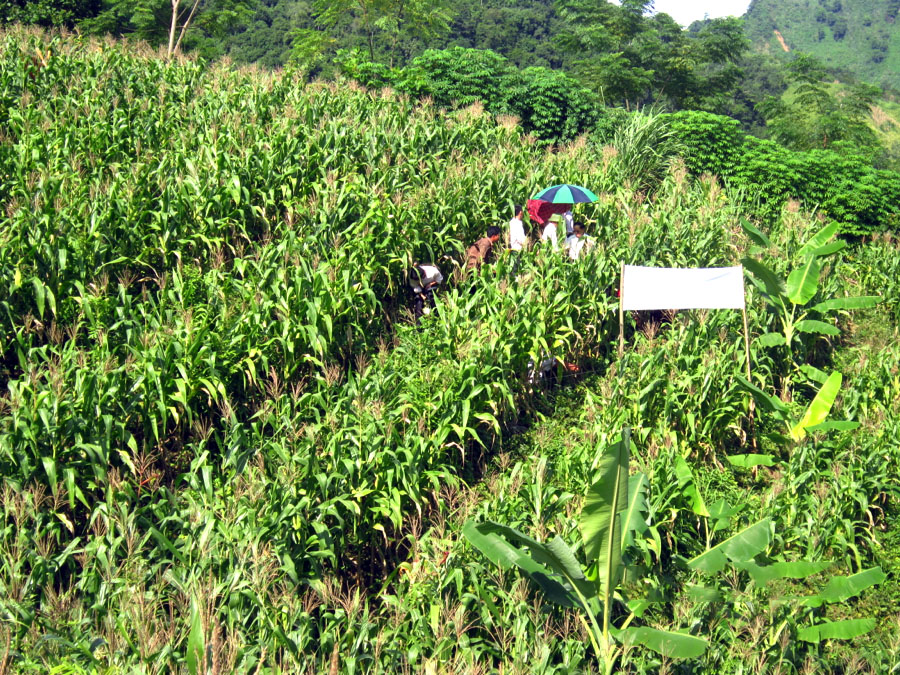Vietnam: Dealing with violence against women in Nghe An province
Violence against women is a persistent and prevalent problem in Vietnam and the rates of domestic violence and abuse have reached epidemic proportions as stated by the Vietnam National Study on Domestic Violence in 2010. Indeed this study revealed that almost two thirds of married women experienced at least one type of domestic violence at some point in their lives.
Project VIE/028 – “Western Nghe An Rural Development Project”, which targets the poorest communities in three districts of Nghe An (Con Cuong, Tuong Duong and Ky Son), has been raising awareness among the staff of the project, governmental partners, stakeholders and especially villagers on issues related to gender equity.

Since 2011, trainings on gender, workshops and study tours have been organised in several communes of the project area. A wide range of educational tools such as games, scripts, stories, pictures and short-films on gender intend to improve people’s awareness. The gender training not only concentrated on issues related to domestic violence but also focused on women’s participation in decision making, leadership, their participation in project activities, etc.
The trainings highlighted that women in most cases were not even aware of their own rights and so it’s not surprising that also their husbands were not aware of the fact that women had any. Only after a gender analysis regarding the distribution of labour in the family, husbands and wives realised that women carry a greater workload than men, and that changes should be made. Moreover the local authorities have often no idea what kind of activities and support they could offer to address inequality.
In 2013, the project widened the scope of gender awareness by including new communes and adding more local departments and units to the trainings. Training of trainer’s sessions were held among the Police Force, Women’s Union, Farmer’s Union, Youth Union, culture centres, schoolteachers and key persons of the communes. Training topics looked at concepts related to gender, gender equity, gender equality law and gender integration in the project activities. These included agriculture, income generation, environment and climate change, infrastructure and laws on domestic violence. Those who were trained in turn provided trainings on gender issues to their colleagues to ensure wide dissemination of the subject at hand. Hence, the activity was able to reach more than a thousand persons.
Furthermore, to create more impact on gender awareness, the project supported the organisation of a campaign on gender equality and domestic violence across several communes in the three targeted districts. The motorcade included busses, cars and hundreds of motorcycles and during the trip other cars and motorcycles joined the parade. People’s Committees of the participating districts and communes, police and different departments and units supported the motorcade. In addition, messages were transmitted on mass media such as radio and television stations. During the parade, messages through loudspeakers were disseminated by the district radios. About 4 000 leaflets on gender equality and prevention of domestic violence were distributed to the people along the road. A multitude of people spontaneously joined the parade in their respective communes and some villagers explained that they had never seen such a campaign.

As an immediate result of the campaign, the district police requested support from the project to help their local officers to be trained on gender issues, so that they would be able to address domestic disputes more adequately. Also, the project was asked to repeat the campaign in 2014.
Through these various awareness-raising activities, women gathered more self-esteem and became more confident about their roles and rights. It has been noticed that women now increasingly use their mobile phones to complain to local authorities, especially if they feel, that they were not properly consulted or heard in a decision making process.
Estelle Lyon Chaudron
↑ Haut de la page

